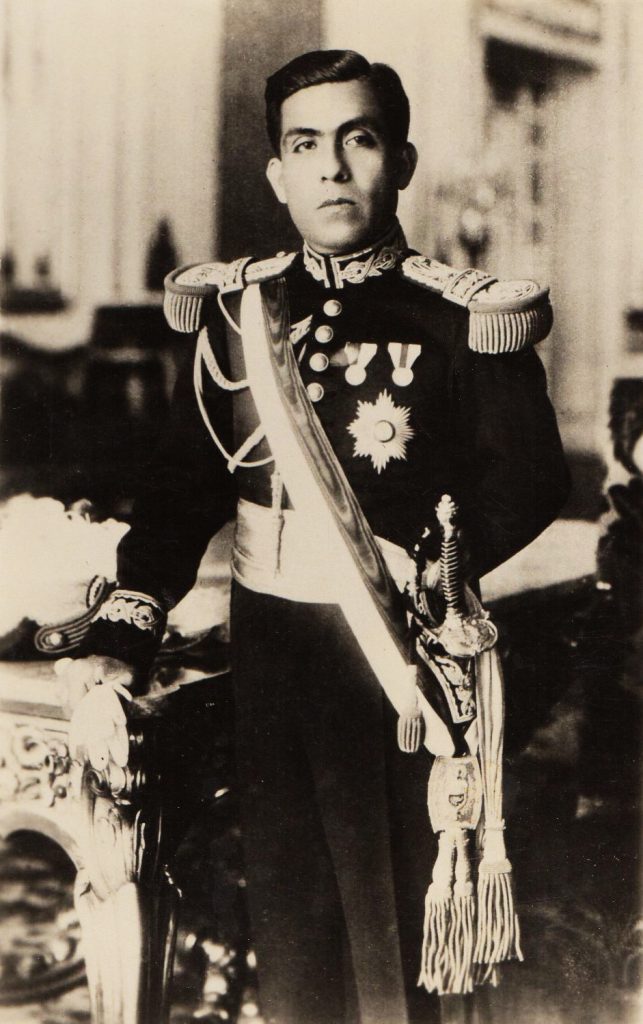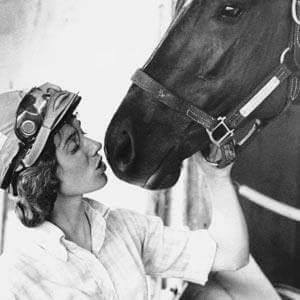Two years prior, in 1930, then-Commander Sánchez Cerro launched a coup d’état in the city of Arequipa against the oligarchical government of Augusto B. Leguía, in order to set up a military government that reigned for the following year. His intention of establishing a new government was fruitful, and he quickly became a heroic figure for almost all Peruvians.3 Even when he landed in the capital city, Lima, his reception was largely celebrated. Although Sánchez Cerro had achieved his goal excellently, the sympathy and respect that the people had for him would not last forever.4
As time went by, the economic situation worsened dramatically. As the threat of rebellion grew, a new government board took it upon itself to call for an election in an attempt to find a candidate who might help improve the situation. Democracy was back in Peru, but it would not last for long.5 Sánchez Cerro saw this as an opportunity to fulfill the eagerness for power that his past success had left in him, but to achieve his goals he had to face one of the most recognized Peruvian politicians: Víctor Raúl Haya de la Torre. Sánchez Cerro knew that he would win the elections, and his confidence was high, but the increasing power of Haya de la Torre and the impact of his party, Alianza Popular Revolucionaria Americana (APRA), in the northern cities of Peru, made him fear for the future. For Sánchez Cerro, Haya de la Torre was much more than a tough opponent. He represented an obstacle to his life’s work.6

The election day arrived with massive crowds of Apristas marching on different cities and towns throughout Peru. At the end of the day, the votes were counted, and Sánchez Cerro was declared the victor against Haya de la Torre by a small margin.7 Although the results were not accepted by the Aprista leader and his followers, who quickly denounced the elections as a fraud, their opinions did not stop Sánchez Cerro.8
On December 8, 1931, Sánchez Cerro inaugurated his new government despite numerous unsuccessful uprisings from the opposing party. During these months, violence and social unrest began to grow enormously, largely due to the influence of APRA on the working population, but also as a result of the totalitarian policies of Sánchez Cerro himself. Regardless, the politician was determined to stay in the government at any cost. Unfortunately, it wasn’t long until Haya de la Torre had proclaimed himself the “Moral President of Peru” and offered a conciliatory speech to the population in Trujillo in order to avoid an aggressive response from his followers. However, the northern Apristas, raised in the more militant anarcho-syndicalist tradition, refused to take his speech seriously, and quickly began conspiring to bring Haya de la Torre to power through organized revolution. Unbeknownst to them, this critical decision would create a huge wound in the history of Peru.9
This situation and the constant defiance of the Apristas in the Congress, motivated Sánchez Cerro to expel the congressional delegation of APRA in February 1932 and to produce a coup d’état in the region, because the congressional delegation was interrupting his government. Sánchez Cerro, feeling that he was losing power, published an unconstitutional law that outlawed political freedoms and allowed the detention of any citizen without a judicial mandate.10 This fact, in addition to the social inequalities and the disrespect of the labor rights of the workers of the sugar farms located to the north of the city of Trujillo, increased social discontent immensely. Only a month later, while Sánchez Cerro was attending Mass with his family, a militant from the APRA attempted to assassinate him by shooting him from behind. The assassination attempt succeeded in puncturing one of Cerro’s lungs. Sánchez Cerro spent a month in recovery and the insurgent was jailed for life. However, the government had no idea that this was only the beginning.11
In May of 1932, a group of sailors who sympathized with APRA staged a failed coup d’état that ended with their executions. That same month, Sánchez Cerro captured Haya de la Torre, who had been in hiding. The dictator felt confident again, for he thought that he had regained control through the incarceration of his primary political opponent, but the detention of the Aprista leader ultimately failed to ease the rage of the Aprista conspirators.12

On July 7, 1932, the unexpected happened. Veiled by the darkness of the early morning, a group of Apristas, accompanied by farmers and other insurrectionaries, carried a reckless attack on the O’Donovan military barracks outside the city of Trujillo. The slaughter had begun. Although Sánchez Cerro knew the intention of the revolutionaries to take the city beforehand, he did not expect the attack to be organized and executed at such a rapid pace; and the results were tragic.13
The Apristas armed themselves with everything they found, breaking into and emptying the arsenals of the barracks. When the dust cleared, it was found that sixteen Apristas had lost their lives and fourteen government soldiers had been killed; the assault was a blow below the belt to Sánchez Cerro. He had to answer the attack immediately, at any cost—he was not in a favorable position. Sánchez Cerro was forced to bear the knowledge that his military companions and subordinates were paraded into Trujillo by the Apristas as war trophies. The rage of the dictator was limitless. Agustin Haya de la Torre, the brother of the imprisoned Aprista leader, was declared Prefect of Trujillo, and he encouraged the Apristas to “give an example of order and discipline.”14 Nonetheless, the Apristas insurrectionaries had divergent ideas of what to do next, and, as a consequence, they made communication errors that trapped them within the city. Sánchez Cerro took advantage of their inefficiency, and, with the help of Colonel Ruíz Bravo and his general staff headed by Lieutenant Colonel Eloy Ureta, meticulously planned an assault on Trujillo. None of the insurgents, not even the citizens of Trujillo, were prepared for what was about to happen.15

The government responded with a devilish use of military force. They sent out the army, the air force, and the navy, and the event quickly became a civil war response. Sánchez Cerro sent more than seven hundred troops from different parts of the northern region, and he even dispatched the warship Almirante Grau and two submarines—it was a life or death situation. However, Sánchez Cerro did not do this to demonstrate power; the dictator was only aiming to attack.16 On July 8, Sánchez Cerro ordered the bombing of Trujillo, and seven planes, flanked by hydro aircraft, began to bomb the entire city. Panic and terror filled the streets. Sánchez Cerro was not willing to back down. During the bombing, the Aprista leaders went into seclusion, leaving the revolutionaries and the people of Trujillo on their own, trapped in a mass of blood and smoke. On the night of July 9, Agustín Haya de la Torre and other Aprista leaders escaped from Trujillo; the city was thus left without any authority. In the early morning of July 10, soldiers and police officers, as well as sergeants, classes, capes, and guards, along with all whom were captured during the insurrection, were massacred in the most horrible way by a group of outraged people. Sadly, this was a confusing incident that was never clarified, for no one ever knew who was responsible for it. Sánchez Cerro, on that same morning, ordered a large deployment of troops on two fronts and the occupation of the city. From his position at the capital, it seemed that his victory was inevitable. However, the revolutionaries continued to fight, trapping several government troops in different sections of the city. In response, Sánchez Cerro and his planning team ordered the warship Almirante Grau to fire on the city of Trujillo. This order, along with the continuous bombardment of the region, meant, finally, the partial capture of the city.17
The morning of July 11 arrived in Trujillo like a dark cloud: the ashes floating in the stale air, the ruins and the smoke, the blood and the pain of a massacred people were inescapable.18 Sánchez Cerro’s troops continued to capture revolutionaries and to destroy war nests, and the city was already under his power. However, nothing had prepared the soldiers for what they were about to discover in the O’Donovan barracks. The troops finally arrived at the place where this bloody conflict had begun. Thirty-five bodies were found, many of them almost unrecognizable, desecrated and disfigured, and the scene was monstrous: it was an orgy of blood. Sánchez Cerro, when notified of this barbarism, collapsed in anger.19 He ordered the shooting of numerous combatants who had surrendered, without trial. He also issued a “Martial Court” without any guarantee and independence, dictating a death penalty against 102 persons, recognized as the most responsible for the uprising. Because many of them were fugitives and others had died in the confrontation, the sentence could only be applied to 42 detainees, who were transferred to the citadel of Chan Chan, forced to dig what would become their graves and, without any exception, received the fatal discharge on July 27, 1932. Sánchez Cerro had succeeded—he had restored what he considered true order with his ephemeral justice.20
The months that followed in what is today known as “The Year of Barbarism,” were dark ones. The fallen soldiers were taken to the capital and buried as war heroes, while hundreds of families in Trujillo were desperate to know where the corpses of their relatives were.21 It is commonly argued that the number of Aprista casualties that occurred under the reign of Sánchez Cerro number more than five thousand. The total is largely unknown because the government never made a real record of civilian deaths, in order to maintain their status. Sánchez Cerro could believe that he had succeeded, that he had stopped his enemy, an enemy that his very fear made unstoppable, but the paths of history are often ineffable.22 Sánchez Cerro continued governing Peru until 1933. On the morning of April 30 of that year, Sánchez Cerro reviewed the troops who were going to fight in the armed conflict with Colombia and who were gathered at the Santa Beatriz Racecourse. As he retired in his undercover and escorted vehicle, an individual armed with an FN M1900 pistol rushed towards him and, getting into the stirrup of the car, shot him in the back several times. His murderer, indeed, was an Aprista.23
- Iñigo García-Bryce, “A Revolution Remembered, a Revolution Forgotten: The 1932 Insurrection in Trujillo, Perú,” Contra Corriente 7, no. 3 (Spring 2010): 286-287, https://projects.ncsu.edu/project/acontracorriente/spring_10/articles/GarciaBryce.pdf. ↵
- Nelson Manrique, ¡Usted Fue Aprista! (Lima: Editorial de la Pontificia Universidad Católica del Perú; 2009), 97-98. ↵
- Iñigo García-Bryce, “A Revolution Remembered, a Revolution Forgotten: The 1932 Insurrection in Trujillo, Perú,” Contra Corriente 7, no. 3 (Spring 2010): 286, https://projects.ncsu.edu/project/acontracorriente/spring_10/articles/GarciaBryce.pdf. ↵
- Iñigo García-Bryce, “A Revolution Remembered, a Revolution Forgotten: The 1932 Insurrection in Trujillo, Perú,” Contra Corriente 7, no. 3 (Spring 2010): 287, https://projects.ncsu.edu/project/acontracorriente/spring_10/articles/GarciaBryce.pdf. ↵
- Nelson Manrique, ¡Usted Fue Aprista! (Lima: Editorial de la Pontificia Universidad Católica del Perú; 2009), 97. ↵
- Iñigo García-Bryce, “A Revolution Remembered, a Revolution Forgotten: The 1932 Insurrection in Trujillo, Perú,” Contra Corriente 7, no. 3 (Spring 2010): 284-285, https://projects.ncsu.edu/project/acontracorriente/spring_10/articles/GarciaBryce.pdf. ↵
- Jorge Basadre, Historia De La República Del Perú (1822 – 1933) (Lima: Empresa Editora El Comercio S.A, 2005), 209. ↵
- Encyclopedia of Latin American History and Culture, 2008, s.v. “Luis M. Sanchez Cerro,” by Alfonso W. Quiroz. ↵
- Iñigo García-Bryce, “A Revolution Remembered, a Revolution Forgotten: The 1932 Insurrection in Trujillo, Perú,” Contra Corriente 7, no. 3 (Spring 2010): 286-287, https://projects.ncsu.edu/project/acontracorriente/spring_10/articles/GarciaBryce.pdf. ↵
- Jorge Basadre, Historia De La República Del Perú (1822 – 1933) (Lima: Empresa Editora El Comercio S.A, 2005), 210. ↵
- Iñigo García-Bryce, “A Revolution Remembered, a Revolution Forgotten: The 1932 Insurrection in Trujillo, Perú,” Contra Corriente 7, no. 3 (Spring 2010): 286-287, https://projects.ncsu.edu/project/acontracorriente/spring_10/articles/GarciaBryce.pdf. ↵
- Iñigo García-Bryce, “A Revolution Remembered, a Revolution Forgotten: The 1932 Insurrection in Trujillo, Perú,” Contra Corriente 7, no. 3 (Spring 2010): 286, https://projects.ncsu.edu/project/acontracorriente/spring_10/articles/GarciaBryce.pdf. ↵
- Iñigo García-Bryce, “A Revolution Remembered, a Revolution Forgotten: The 1932 Insurrection in Trujillo, Perú,” Contra Corriente 7, no. 3 (Spring 2010): 286-287, https://projects.ncsu.edu/project/acontracorriente/spring_10/articles/GarciaBryce.pdf. ↵
- Jorge Basadre, Historia De La República Del Perú (1822 – 1933) (Lima: Empresa Editora El Comercio S.A, 2005), 212. ↵
- Iñigo García-Bryce, “A Revolution Remembered, a Revolution Forgotten: The 1932 Insurrection in Trujillo, Perú,” Contra Corriente 7, no. 3 (Spring 2010): 287-288, https://projects.ncsu.edu/project/acontracorriente/spring_10/articles/GarciaBryce.pdf. ↵
- Jorge Basadre, Historia De La República Del Perú (1822 – 1933) (Lima: Empresa Editora El Comercio S.A, 2005), 212. ↵
- Iñigo García-Bryce, “A Revolution Remembered, a Revolution Forgotten: The 1932 Insurrection in Trujillo, Perú,” Contra Corriente 7, no. 3 (Spring 2010): 288-289, https://projects.ncsu.edu/project/acontracorriente/spring_10/articles/GarciaBryce.pdf. ↵
- Jorge Basadre, Historia De La República Del Perú (1822 – 1933) (Lima: Empresa Editora El Comercio S.A, 2005), 212-213. ↵
- Iñigo García-Bryce, “A Revolution Remembered, a Revolution Forgotten: The 1932 Insurrection in Trujillo, Perú,” Contra Corriente 7, no. 3 (Spring 2010): 289, https://projects.ncsu.edu/project/acontracorriente/spring_10/articles/GarciaBryce.pdf. ↵
- Margarita Giesecke Sara-Lafosse, La insurrección de Trujillo (Jueves 7 de julio de 1932) (Lima: Fondo Editorial del Congreso del Perú, 2010), 7. ↵
- Jorge Basadre, Historia De La República Del Perú (1822 – 1933) (Lima: Empresa Editora El Comercio S.A, 2005), 213. ↵
- Margarita Giesecke Sara-Lafosse, La insurrección de Trujillo (Jueves 7 de julio de 1932) (Lima: Fondo Editorial del Congreso del Perú, 2010), 7-8. ↵
- Encyclopedia of Latin American History and Culture, 2008, s.v. “Luis M. Sanchez Cerro” by Alfonso W. Quiroz. ↵




31 comments
Guatavo
Muy buen articulo. También hubieron consecuencias en Arequipa, donde incluso a un extranjero como mi abuelo lo acusaron de ser Leguista (o Aprista). Lo desterraron del Peru forzando a que sus hijos se crien sin padre por mucho anos.
Sara Guerrero
This was a very informative article and it’s very well-researched. I got a glimpse of Peru’s history and how Sanchez Cerro’s eagerness got the best of him. What I found interesting is how at the beginning he had the support of the Apristas and at the end he ended up fighting them. It really reflects a major theme of how power can change people and he did exactly that and he ended up getting killed by an Aprista.
Hali Garcia
This is a very well researched and written article. I really enjoyed your writing style because it kept me interested and I could practically see what was going on. I do not know a lot about Peru and this article helped me learn quite a bit of their history. Sanchez Cerro was a very intense leader and he really did fight with all he had. What I found ironic was how he was killed by the Apristas who had originally supported him.
Samuel Vega
I am not familiar with the struggles of Peru during the 1930s. The article describes the
Apristas, revolutionaries of one of the biggest parties in Peru, Economic depression can bring out the worst in citizens. They feel they have no choice; but to stand up and fight the government. The article was informative on Sanchez Cerro, how he came to power and was initially supported by the Apristas, and then later fought them.
Andrea Degollado
I had very little knowledge of the history of Peru, so it was really great to read this article. Although Cerro’s actions were a bit questionable its seemed that at the end he had good intentions in mind. The death of Cerro was quit ironic, because he died at the hands of his enemy which is what he did not want. This was a very informative article and was great to read. The wording really helped you visualize what was going on, great job.
Francisco Cruzado
I enjoyed a lot the narrative! One quick thing I would like to point at, though, is that according to a preferred source of mine (La Revolución de Trujillo, by Margarita Giesecke), Agustín Haya De La Torre was also responsible for the great disorganization in which the Revolution began and ended. El Chucho, as it was his nickname, had no idea that the revolt would take place on July 7, and was the first in escaping from Trujillo (even before the bombing started). I am glad that this local memory is published, accesible to the world, which I hope may know more about the great tragedies and teachings of XX-century Peru
Malleigh Ebel
I knew very little about the history of Peru until reading this article. I did not realize how brutal Cerro. It’s almost scary how Cerro thought he was doing good for his country when really he was killing many of his citizens in in terrible civil war. The political injustices towards the Aprista and the rest of the civilians were immense. I loved the intro; very captivating.
Nelly Perez
This was a really intense article to read. I got to learn about the history of Peru a bit through this article. Cerro’s actions were a bit questionable at times. Was this worth the deaths of lives who were not apart of the situation? Could there have been an alternative? At least Cerro got what he wanted.
Stephanie Cerda
I’ve never heard much about the history of Peru, but it is incredibly interesting, and quite fascinating. It’s interesting to hear about different political authorities and how they chose to manage their country, as well as their own role. His death is ironic, since his enemies are who brought im down, which is what he sought to avoid. It’s interesting to see his evolution as a leader.
Nicole Ortiz
Wow, this was such a good article. I had never heard about this until after reading this article. It’s surprising to see how power is typically the driving force behind many wars, fights, etc. as a way to establish authority but oftentimes, people are so focused on power that they don’t stop and realize the impact and damage that is left behind. Despite how much Sanchez Cerro hated the Apritstas, it’s ironic to see how his death happened in the hands of his worse enemy.